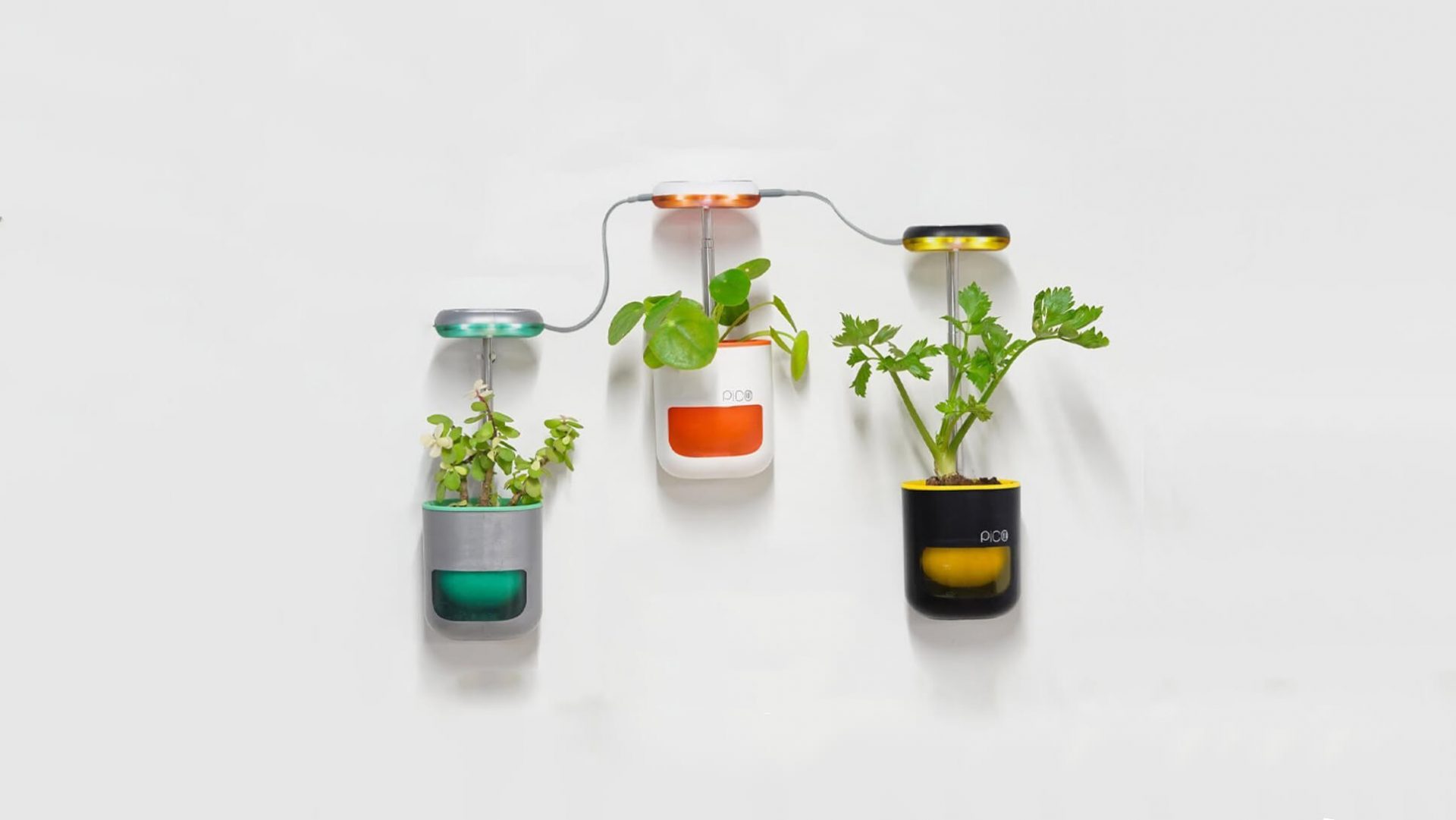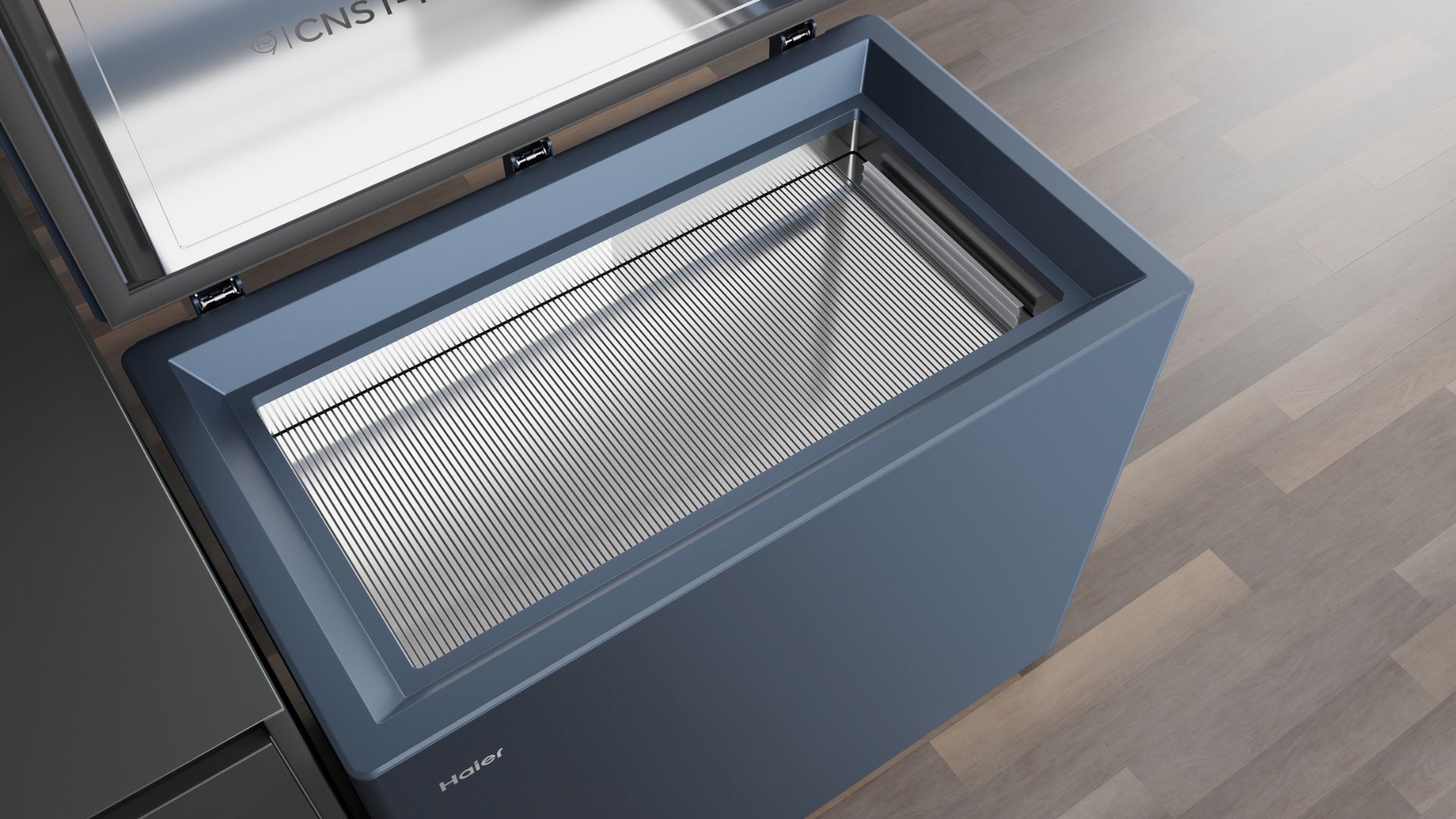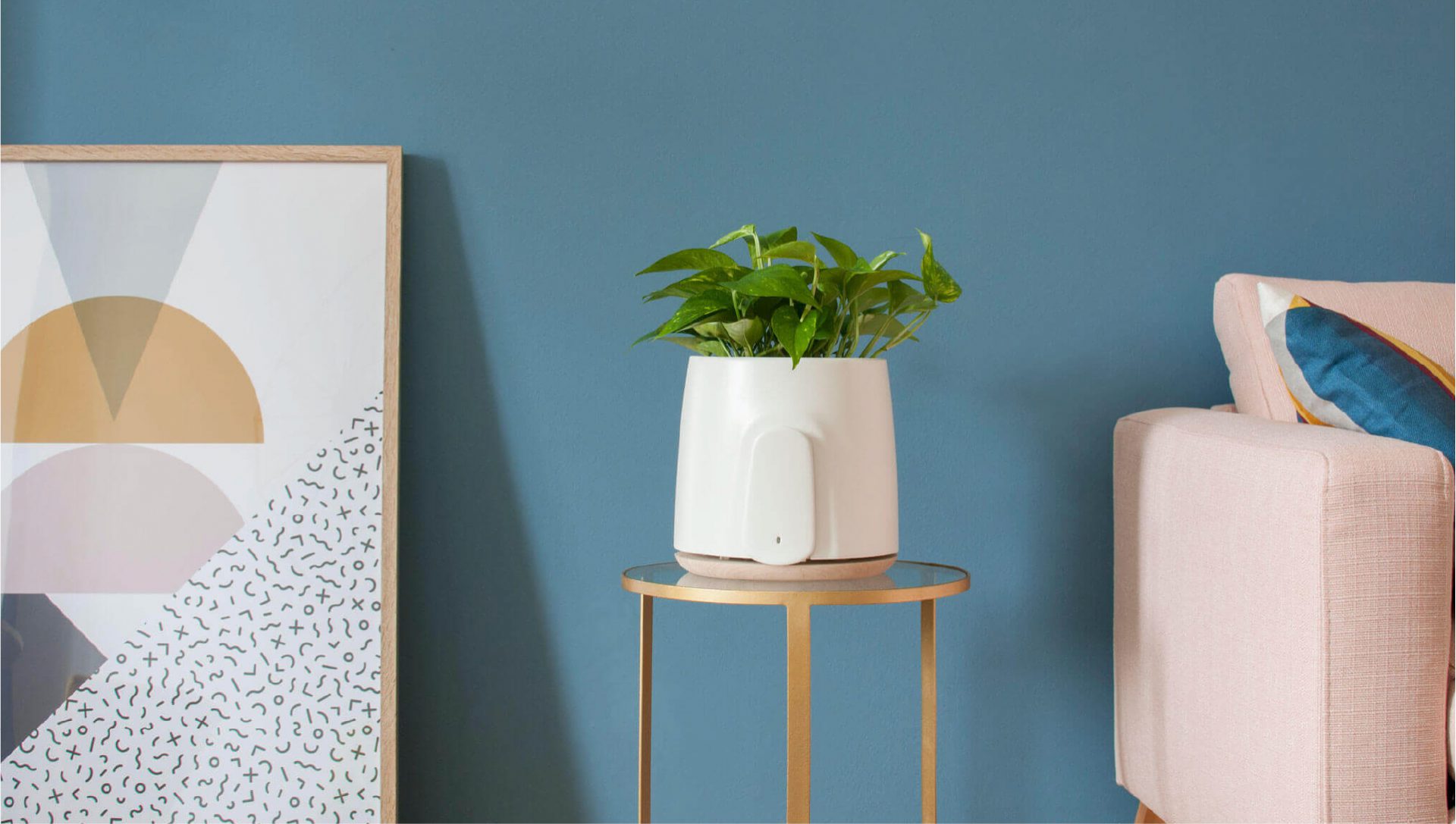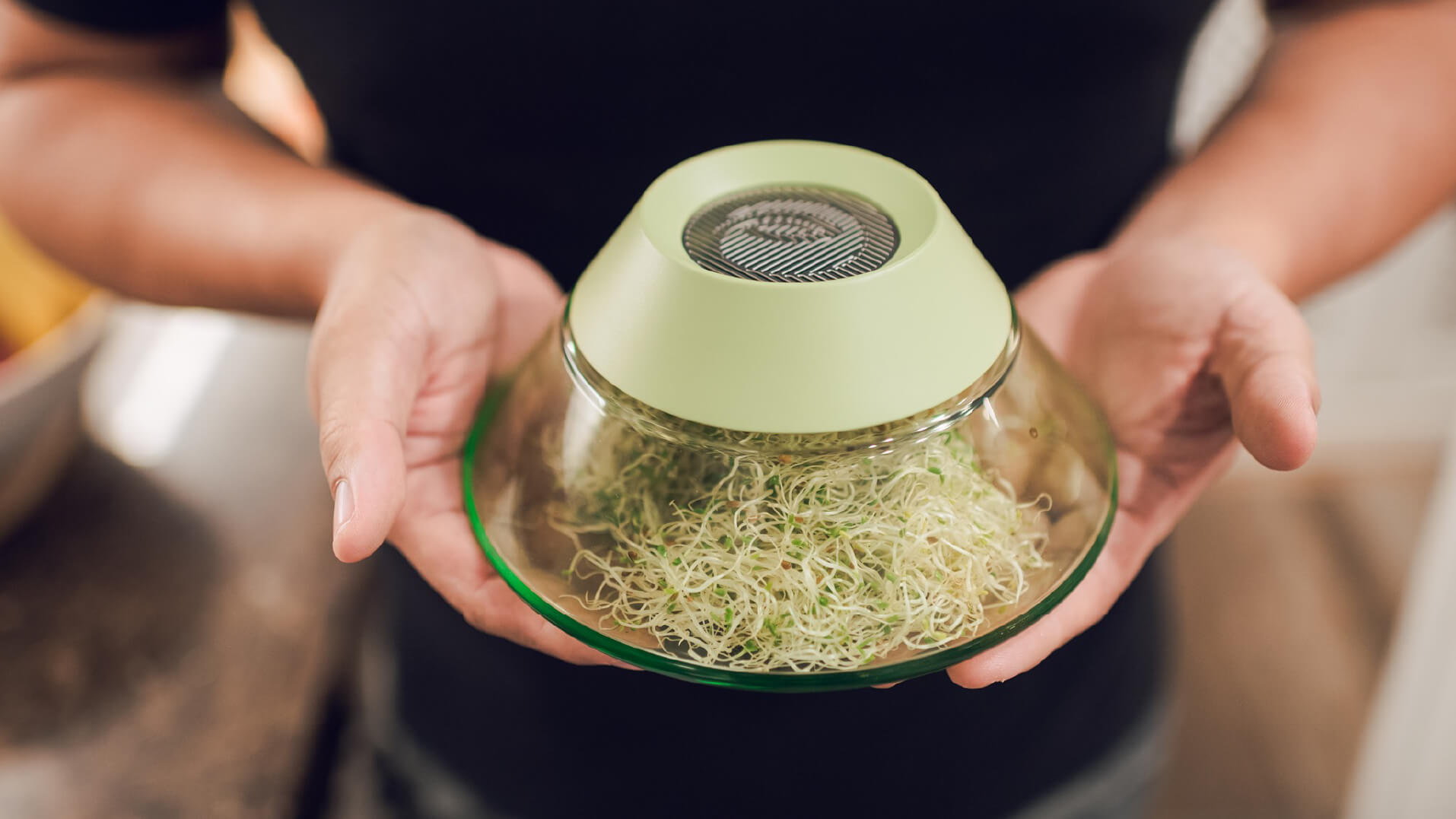The first domestic device for food preservation that utilizes a MAP system
Every year, more than 900 million tons of food are wasted, with a devastating effect on the ecosystem, and over 60% of this waste occurs in our homes

Nebula, conceived by SAES, introduces a groundbreaking approach to domestic food preservation. It incorporates a miniaturized Modified Atmosphere Packaging (MAP) system, leveraging well-established industrial technology, and thereby enabling consumers to contribute positively to the environment.
“With Nebula, we wanted to push the technological part to the limit to reduce the size of the product, capturing the technique in a brand language that led us to its definition. The philosophy has always been to go against the tide: reduce the electronics and displays to the essential, reduce the functions to a minimum and take maniacal care of the invisible structure.” says SAES.
What is Modified Atmosphere Packaging?
Modified atmosphere packaging (MAP), sometimes referred to as protective atmosphere packaging, is a widely adopted technology within the food industry. Its primary purpose is to extend the shelf life of fresh products without resorting to preservatives that might compromise the product’s natural characteristics or taste.

The fundamental idea is straightforward: the regular atmospheric air, which includes nitrogen, oxygen, argon, water vapor, carbon dioxide, and small amounts of other gases and vapors, is substituted within the packaging with a gas blend, typically a combination of nitrogen and carbon dioxide. This substitution of gases helps maintain product quality and freshness over an extended duration.
An awarded concept
SAES, an advanced material company specializing in micro and nanomaterials for niche technological sectors, celebrates a new achievement by winning the Red Dot Design Award 2023 in the Concept Design category with the Nebula Project.
This new success, characterized by quality, research, and innovation, was achieved by SAES’s Design House department, led by young talents Marco Filippo Batavia as the Head of Design House and Ginevra della Porta as the Chief Innovation Officer.
For SAES, the Nebula Project, even though it has never been commercialized, represents a milestone in defining a design language and a manifesto for future developments.
“With Nebula, by using pre-mixed capsules with compressed gas, through two holes in its container, we are able to extract the internal atmosphere in the first step and inject a specific composition in the second, which is different and ideal for the food contained inside. This extends the preservation of all the organoleptic properties of the contents.”, the company adds.

SAES’s technical and scientific aesthetics
The cage-like structure draws inspiration from NextTorr pump architecture designed for extreme applications like particle accelerators. The use of glass highlights the device’s core, while electronics and batteries are concealed under a black casing.
The honeycomb geometry of the handle results from extensive parametric iterations and ensures an optimal grip and easy one-handed rotation. An OLED display embedded in the handle provides real-time information on process parameters using pressure and gas recognition sensors.
The device, with its unique and iconic design, is divided into three functional parts: the handle, which serves as the user interface; the technological core embedded in a scratch-resistant glass tube; and the hammer, which includes the slot for rechargeable capsules and the interface with containers.
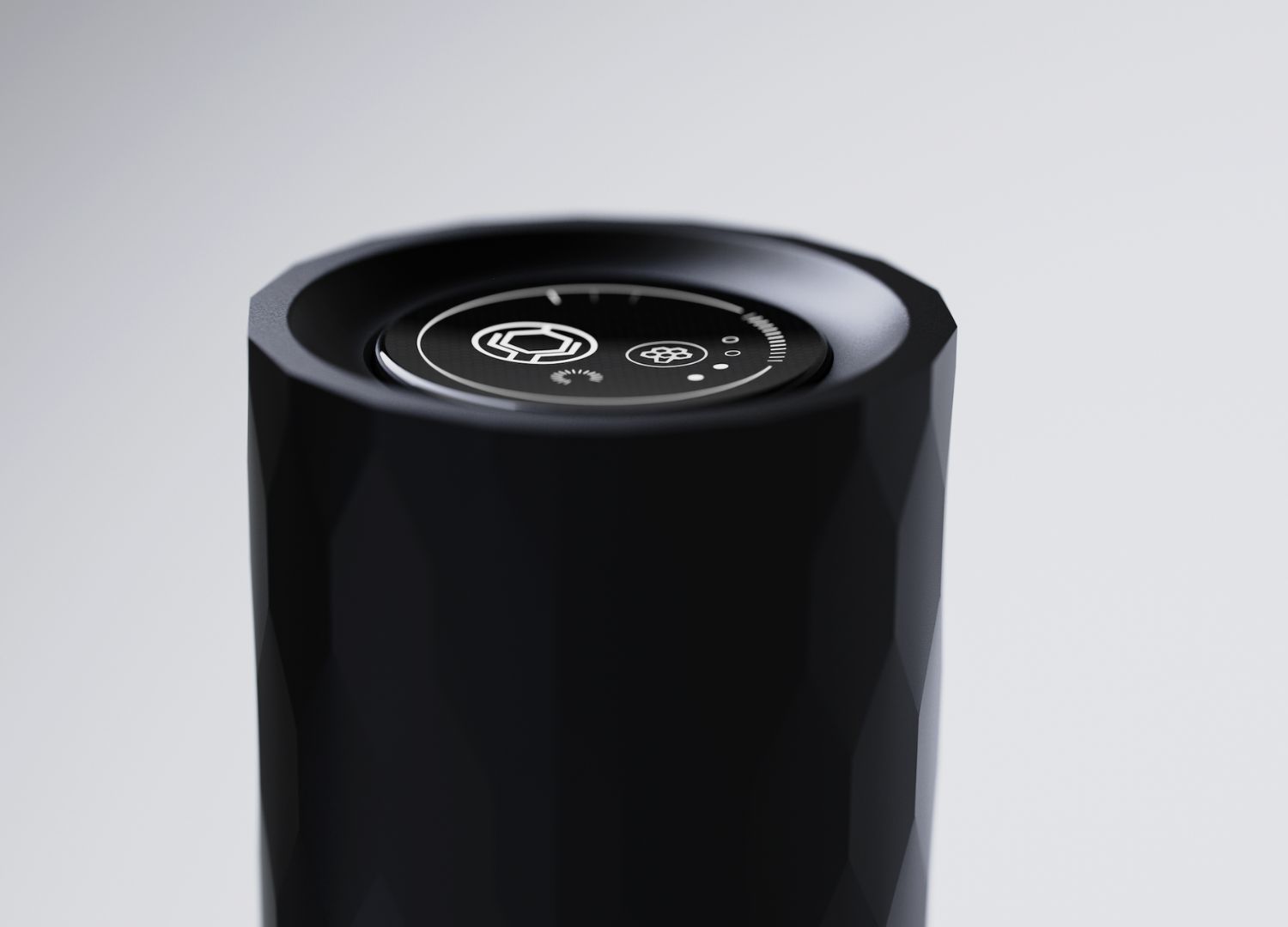
How does Nebula work?
By using reusable rigid containers, Nebula allows for a reduction of approximately 5 kg of non-recyclable plastic waste per capita each year, a significant improvement considering that traditional home food preservation often relies on flexible bags composed of multilayer films that are nearly impossible to recycle.
Nebula enables the extraction of air from the containers to a pressure of about 100 millibars, followed by the injection of a gas mixture that restores the internal pressure to approximately 900 millibars, approaching atmospheric pressure. The circular shape, commonly used in vacuum technology laboratories, naturally counters external forces during the process.
In modified atmosphere packaging, the final pressure is slightly below atmospheric pressure, providing significantly greater design flexibility compared to vacuum technology. This flexibility allows the use of lightweight solutions without the need for reinforcement structures.
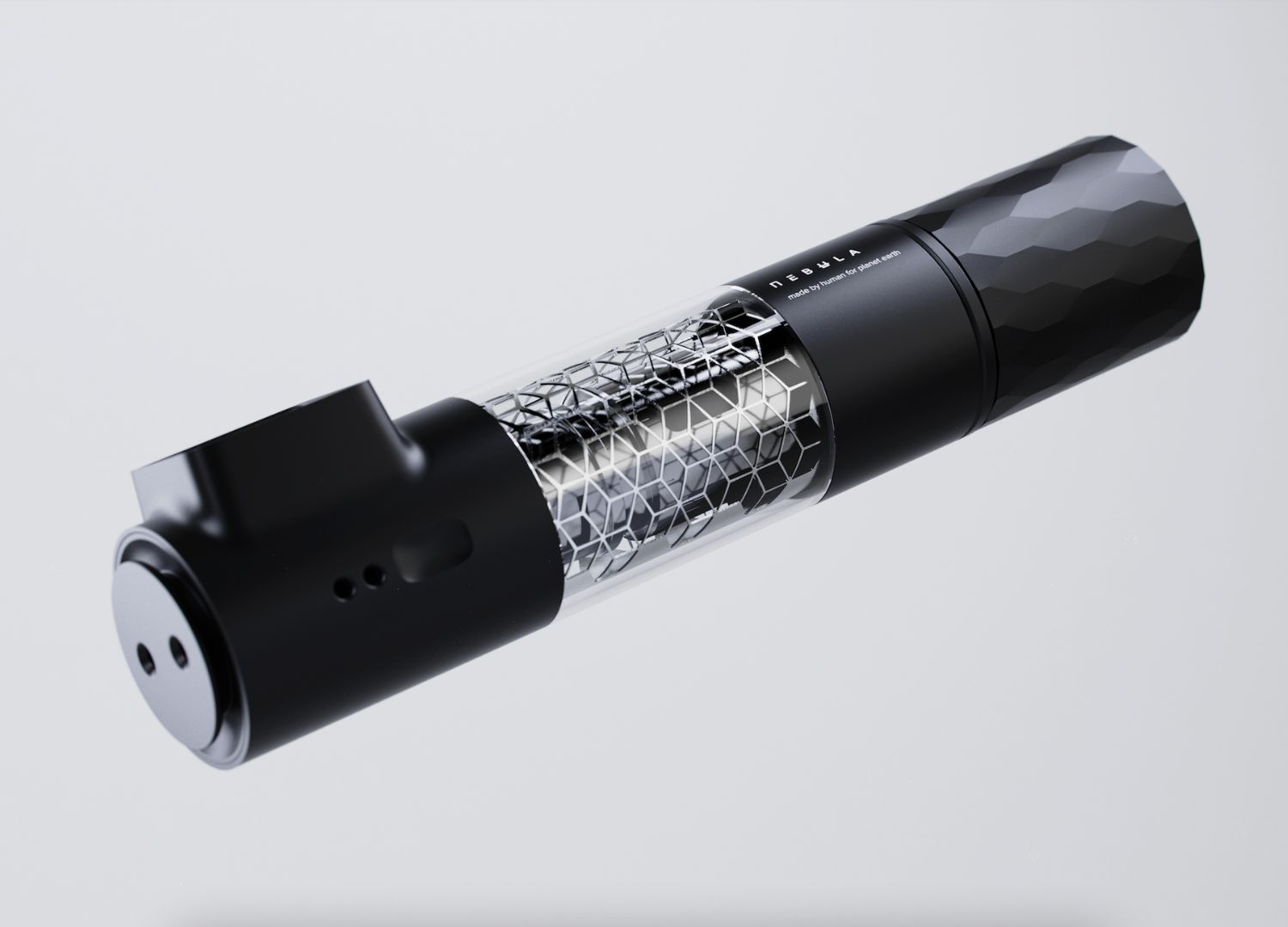
What are the benefits?
Adopting these solutions brings numerous advantages, including reduced energy consumption in production and improved recyclability.
Nebula containers use an innovative microcellular polypropylene (PP) molding technique, reducing weight by up to 20% while increasing strength and impact properties by 30% compared to standard PP materials.








